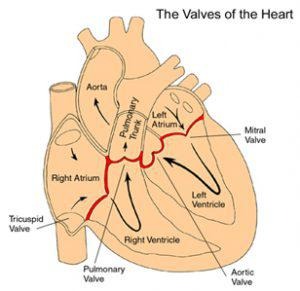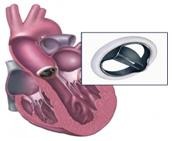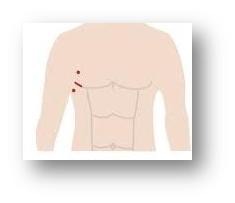
The heart is a muscle that pumps blood around the lungs and the rest of the body. There are four valves in the heart and the job of each valve is to make sure that blood flows in the correct direction.

In Valve Replacement Surgery the surgeon will remove the damaged valve and replace it with an artificial (prosthetic) valve. There are two kinds of valves that are used for valve replacement and you should talk with your doctor about which type is best for you.
They are made from durable metals, carbon, ceramics, and plastics. A fabric sewing ring is used to attach the valve to the tissues in the patient’s heart. The major advantage is durability. However, blood thinners must be taken for the rest of the patient’s life to prevent blood clots.
Animal tissue, either an actual pig valve or a bovine pericardial engineered valve. The human tissue of a donated heart used most often to replace infected valves. A patient’s own tissues. A Ross Procedure (also called a Switch Procedure) involves taking the patient’s normally functioning pulmonary valve and using it to replace a diseased aortic valve. The pulmonary valve is then replaced with a donated pulmonary valve.
During traditional heart valve surgery, a surgeon will make an incision down the center of your sternum (breastbone) to get direct access to your heart. The surgeon then repairs or replaces your abnormal heart valve or valves. While this approach remains in use, today most patients with isolated valve disease can be treated with minimally invasive techniques.

Minimally invasive surgery is a type of surgery performed through smaller incisions. This type of surgery reduces blood loss, trauma, and length of hospital stay. Heart valve surgery is the most common minimally invasive procedure. Your surgeon will review your diagnostic tests prior to your surgery to see if you are a candidate for minimally invasive valve surgery.
This specialized aortic valve replacement surgery is used most often with children and adults under age 35. The procedure involves replacing the patient’s diseased aortic valve with the patient’s own pulmonary valve, called an autograft. Then the surgeon replaces the pulmonary valve with a homograft pulmonary valve. That is a pulmonary valve from a human donor. Compared to traditional valve replacement using manufactured prosthetic valves, the Ross Procedure is most beneficial for young people and active older patients: The pulmonary valve lasts longer than prosthetic valves, which tend to fail after a few years in younger patients.




Cancer Treatment in India, VSD Closure (Ventricular Septal Defect), ASD Closure Surgery (Atrial Septal Defect), Heart hole closure surgery in india, Brain Tumour Surgery in India, Craniotomy Surgery for Treatment of Brain Tumour in India, Brain Stem Glioma Treatment in India, Deep Brain Stimulation surgery in india , Best Spine Surgery In India , Cervical Spine Disorders Surgery and Treatment in india , epilepsy surgery in india , Heart Surgery in india , Best open heart surgery hospital in India , All about Spine Surgery, Types of Back Surgery , Top Doctors In India , Best Hospitals in India , Bhavin Desai cardiac surgeon, Best kidney transplant doctor in IndiaBest hospital for limb lengthening surgery in India, Best hospital for neurosurgery in India, Best hospital for bypass surgery in India, Narayana Hrudayalaya online appointment, Best orthopedic hospital in Bangalore, Best open heart surgery hospital in India, Best bypass surgeon in India, best spine surgery hospital in India, Artemis hospital Gurgaon, KD hospital medical appointment
Limb lengthening surgery cost in India, DSA test, Diabetes treatment in India